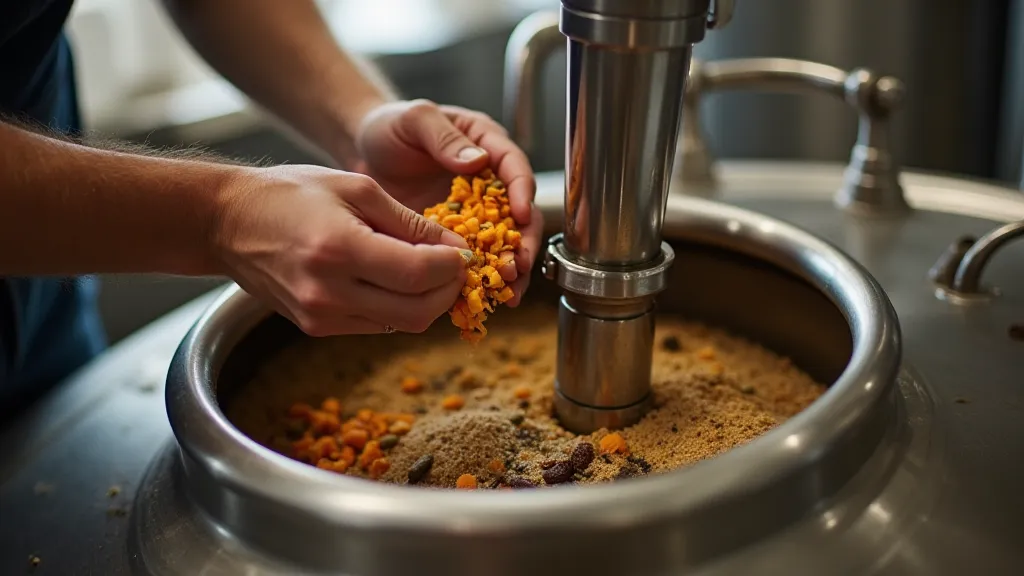The Confluence of Cultures: Exploring Fusion Beer Styles in Craft Brewing
The satisfying clink of a pint glass, the gentle fizz, the aroma that hints at a story – beer is far more than a beverage; it's a cultural touchstone. For centuries, brewing has been entwined with tradition, geography, and the very spirit of communities. But in the vibrant landscape of modern craft brewing, something extraordinary is happening: a delicious, experimental fusion of styles and techniques, drawing inspiration from across the globe and creating beers unlike anything seen before. It’s a movement not unlike the evolution of music, where disparate influences collide to produce something entirely new and compelling, a feeling I deeply understand as someone captivated by the soulful sound of antique accordions.
There’s a peculiar resonance between the meticulous restoration of a vintage accordion and the innovative process of crafting fusion beer. Both require a profound respect for the past, a keen eye for detail, and the patience to coax beauty and functionality from neglected artifacts. I remember finding my first accordion at a dusty estate sale. Its bellows were cracked, its keys sticky, and its once-vibrant finish dulled with age. But I heard its potential; I sensed the music it yearned to release. Similarly, brewers today are unearthing the beauty in historical techniques and ingredients, then daring to recombine them in ways that were previously unimaginable.

The Roots of Fusion: A Historical Perspective
To understand the current wave of fusion beer, we need to look back. Historically, brewing was hyperlocal. Different regions developed unique styles based on available ingredients and prevailing tastes. Belgian Trappist breweries, with their emphasis on candi sugar and complex yeast strains, represent one pillar. The English, with their appreciation for malt and gentle bitterness, contributed another. German brewing traditions, from the crisp pilsners to the rich bocks, provided a third. These were largely self-contained systems, evolving organically over generations.
However, globalization and increased communication began to chip away at these boundaries. The age of exploration brought new ingredients and techniques to different parts of the world. Hops, for instance, originated in Europe but found a passionate following in America. The introduction of American hops to traditional English ales resulted in the iconic American IPA. This initial exchange laid the groundwork for the bolder experimentation we see today.
The Rise of the Fusion Brewer: A New Breed of Craftsperson
The modern craft beer movement, born in the late 20th century, amplified this trend. Brewers, no longer constrained by tradition, began to look beyond their own backyards for inspiration. They started experimenting with ingredients and techniques from around the globe, creating hybrid styles that defied easy categorization. These aren't simply mashups; they represent a deep understanding and respectful blending of different brewing philosophies.
Take, for example, the rise of “witbier IPAs.” The witbier, a Belgian wheat beer characterized by its refreshing citrus and spice notes, is combined with the assertive hop profile of an IPA. The result is a beer that retains the witbier’s complexity while delivering the invigorating bitterness and aroma that IPA lovers crave. Or consider the popularity of "Saison Ales," where the farmhouse yeast character and rustic grain profile of a Saison are amplified by the malt backbone of a traditional English ale. Each style is enriched and expanded through this innovative union.
The skill required to pull off a successful fusion beer goes far beyond simply combining ingredients. It demands an acute palate, an understanding of yeast character, and a mastery of brewing techniques. Just as a skilled accordion repairman must understand the intricate mechanics of the instrument and the nuances of its construction, a fusion brewer must possess a comprehensive knowledge of the components they are working with. There’s a delicate balance to strike; too much of one element can overshadow the others, resulting in a muddy or unbalanced beer.
Beyond the Recipe: The Creative Influences
The inspiration for fusion beer often extends beyond the technical aspects of brewing. Brewers draw on a wide range of cultural influences, from music and art to cuisine and history. The concept of ‘terroir’ – the idea that the environment in which a product is grown or produced influences its character – plays a significant role. Brewers are increasingly interested in showcasing the unique qualities of their local ingredients and incorporating them into innovative styles.
I see parallels with the restoration of antique accordions. Sometimes, I'm not just repairing an instrument; I'm uncovering a piece of history. I imagine the hands that played it, the stories it witnessed, the emotions it evoked. Similarly, brewers are driven by a desire to connect with the past, to celebrate diversity, and to create something truly unique. They’s aiming to tell a story, not just produce a beverage.

The Future of Fusion: A Limitless Possibility
The evolution of fusion beer is far from over. As brewers continue to experiment and push the boundaries of what's possible, we can expect to see even more innovative and unexpected combinations. The influence of less-explored brewing traditions, such as those of Africa, Asia, and South America, is likely to become increasingly prominent. Imagine a beer that combines the refreshing acidity of a Brazilian caipirinha with the rich malt character of a Scottish ale! The possibilities are truly limitless.
And just as the revival of interest in antique accordions is fueled by a desire to connect with the past and celebrate craftsmanship, the continued success of fusion beer will depend on brewers’ commitment to quality, innovation, and respect for tradition. It's about honoring the origins of each style while forging a new path forward, a path illuminated by creativity and driven by a passion for the art of brewing. The clink of a pint glass in this new era isn't just a sound; it's a testament to the beautiful confluence of cultures and the boundless potential of human ingenuity.






